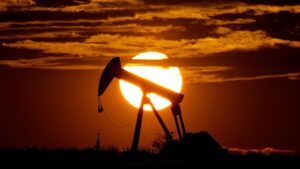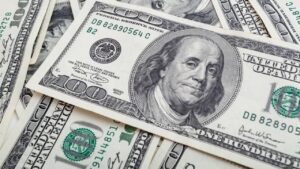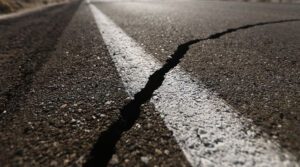
In the western, northern and Vinnytsia regions on Thursday afternoon, rains are expected, in the northeast – with wet snow, in some places with wet snow, light frost, icy roads, according to a press release of the Ukrainian Hydrometeocenter on Wednesday.
Wind southwest, west, 7-12 m/s, at night in the western regions, gusts of 15-20 m/s during the day.
The temperature at night is from 3° to 2° of frost, during the day 3-8° of heat, in the west and south of the country up to 10° of heat; in the eastern regions at night 0-5° of frost, during the day 0-5° of heat. In the Carpathian highlands, heavy sleet, icy roads, wind gusts of 25 m/s, snowstorms, temperatures around 0°.
In Kiev on January 5, rain is expected, with wet snow at night. The wind is northwest, 7-12 m/s, gusts of 15-20 m/s during the day. The temperature at night will be 0-2° warm, while during the day it will be 5-7° warm.
January 6, light to moderate snow and frosty roads are expected in Ukraine. In the south of the country and in the Transcarpathian region – mostly rain. The wind is northwest, 7-12 m / s, at night in the west, gusts of 15-20 m / s in Ukraine during the day.
The temperature during the day in the northern and most western regions is 0-5° frost, in the rest of the territory 0-5° warm, during the day in the south and Transcarpathian region up to 9° warm. Kyiv will have moderate snow at night, light snow during the day, icy roads, wind 7-12 m/s northwest, gusts of 15 m/s during the day, night and day temperatures 0-2° frost.
Structure of approved state budget income for 2023

CMU

Oil prices continue to decline on Wednesday after falling by more than 4% in the previous session.
Pressure on the market continues to have traders doubts about the prospects for demand for oil in China, where there remains a high incidence of COVID-19 after the removal of most of the quarantine restrictions.
“We believe that demand for commodities in China will remain weak in the first quarter of the beginning of the year, given the ongoing recession in real estate, a new wave of COVID-19 disease and weak export demand,” notes Capital Economics analyst Caroline Bain.
Meanwhile, fears of energy shortages in the global market during winter, which supported prices in recent months, are weakening, given the milder-than-expected winter weather in the U.S. and Europe, notes Bloomberg.
March Brent crude futures on the London-based ICE Futures exchange were at $81.93 a barrel by 7:10 a.m. Wednesday, down $0.17 (0.21%) from the previous session’s closing price. Those contracts fell $3.81 (4.4%) to $82.1 a barrel at the close of trading on Tuesday.
The price of WTI futures for February at electronic trades of NYMEX fell by that time by $0.27 (0.35%) to $76.66 per barrel. By the close of previous trading the cost of those contracts fell by $3.33 (4.2%) to $76.93 a barrel.
At the end of 2022 Brent has risen by 10.5%, WTI – by 6.7%.

The ICE-calculated index showing the dollar’s dynamics against six currencies (euro, Swiss franc, yen, Canadian dollar, pound and Swedish krone) is losing 0.03% in trading, while the broader WSJ Dollar Index – 0.24%.
Traders are waiting for the publication of the minutes of the Federal Reserve’s (Fed) December meeting, expecting to see signals in it that the U.S. central bank is ready to soften plans to further raise the benchmark interest rate amid weakening global economic activity, Market Watch notes.
The Fed raised the rate by 50 basis points (bps) to 4.25-4.5% per annum in December, while at the previous four meetings it had increased by 75 bps. At the same time, Fed Chairman Jerome Powell said that the U.S. Central Bank will raise the rate until it reaches its inflation targets.
“While the Fed plans to keep rates high longer than previously expected, markets continue to resist, still expecting policy easing,” High-Frequency Economics experts Rubila Farooqui and John Sylvia said in a review. – We don’t expect the Fed to move to a rate cut this year.”
The minutes of the Fed’s December meeting will be released Wednesday at 9:00 p.m. Q.
As of 8:05 a.m. QE Wednesday, the euro/dollar pair is trading at $1.0573, up from $1.0550 at the close of the previous session. The pound/dollar exchange rate is at $1.1986 against $1.1967 the day before.
The U.S. currency pair with the yen dropped to 130.8 yen from 131.01 yen during the previous trading session.
The dollar-yuan exchange rate declined during trading to 6.8919 yuan against 6.9151 yuan the day before.
EURO, pound, U.S. dollar, yen

The Main Special Control Center at 15.28 Kiev time registered an earthquake in the Zakarpattia region near Irshava, at a depth of 6 km with a magnitude of 3.8 (on the Richter scale), the center’s official Facebook page reported Tuesday.
According to the report, an earthquake of this level is felt inside the building by many people, outdoors by few. People wake up, but no one is frightened. The vibrations are similar to the concussion generated by a heavily loaded car. The shaking of windows, doors, dishes. The creaking of floors and walls. Furniture begins to shake. Hanging objects loosen easily. In cars standing still, the jolt is noticeable.
On the territory of Transcarpathian region the most powerful earthquakes were registered on January 23, 2020 and October 27, 2021 with magnitudes 3.0 and 3.1 respectively.